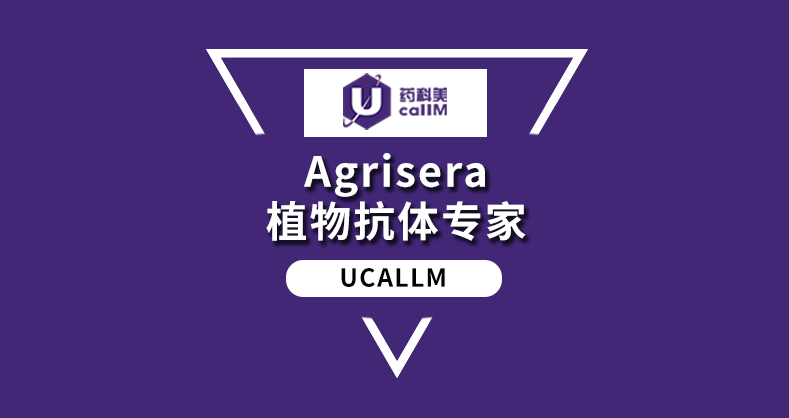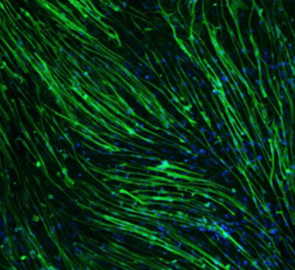Repligen 瑞普利金蛋白纯化柱现货特价!下单速发,出完即止!
货号 | 特价产品 |
C02-E100-05-N | MicroKros® 20cm 100kD mPES 0.5mm |
N02-E100-05-N | MiniKros 20cm 100kD mPES0.5mm |
D02-E100-05-N | MidiKros 20cm 100kD mPES 0.5mm |
N04-E100-05-N | MiniKros 41.5cm 100kD mPES 0.5mm |
S02-E100-05-N | MiniKros Sampler 20cm 100kD mPES 0.5mm |
D02-E030-05-N | MidiKros 20cm 30kD mPES 0.5mm |
S02-E030-05-N | MiniKros Sampler 20cm 30kD mPES 0.5mm |
S04-E100-05-N | MiniKros Sampler 41.5cm 100kD mPES 0.5mm |
D04-E300-05-N | MidiKros 41.5cm 300kD mPES 0.5mm |
S04-E030-05-N | MiniKros Sampler 41.5cm 30kD mPES 0.5mm |
K06-E100-05-N | KrosFlo Hollow 65cm 100kD mPES 0.5mm |
ACPM-799-01N | Pressure Transducer, Polysulfone, Non-sterile |
产品说明书
Hollow Fiber Membranes for Tangential Laboratory Separations
The MicroKros® and the MidiKros® disposable filters are designed for crossflow membrane separation of small volumes. These are the first practical tangential flow devices for processing volumes as small as 2 ml. They are an ideal alternative to centrifugation for applications where pellet formation is undesirable. Flow can be supplied using either syringes or a peristaltic pump like the KRIIi or KRI. The MicroKros® modules have a total membrane surface area ranging from 13 to 92 cm2 to process volume ranging from 2 ml to 50 ml. The MidiKros® modules have a total membrane surface area of 75 to 610 cm2 to process volumes from 20 ml to 200 ml.
Spectrum Tangential Flow Hollow Fiber MembraneTechnology for Microfiltration and Ultrafiltration
Spectrum tangential flow membrane modules utilize advanced hollow fiber flow geometry in which every fluid path is identical in length and dimension. The membrane module housing is constructed of polysulfone with inlet and outlet ports for retentate. Either a syringe or a peristaltic pump drives the process fluid through the fiber lumen via the inlet port and out the outlet port. The retained solutes (retentate) are progressively concentrated and recirculated tangentially through the lumens. Solvent and small solutes (permeate) pass through the hollow fiber pores into the extracapillary side and out the filtrate port on the side. Uniform flow distribution makes it practical to process difficult streams such as those containing suspended solids, fibers, particles and cells.
Benefits
• Tangential flow reduces concentration polarization and enhances filtration rate.
• Hollow fiber membranes provide large surface areas in compact housings.
• Ready to use.
• Gentle protein, cell and particle washing without pellet formation.
• Materials are non-pyrogenic by LAL, low bioburden.
• Membranes are manufactured in a ISO Class 7 clean room under GMPs.
• Meet USP class VI standard for biocompatibility.
• Priced for single use, membranes ensure consistent results and high product recovery.
• Animal Free
Applications
• Concentration of protein, antibodies and microbial cells.
• Diafiltration of proteins or uniform latex particles and other diag
nostic particles.
• Clarification of lysates to remove cell debris from soluble proteins.
• Recovering serum from whole blood.
• Media clarification for hollow fiber bioreactors.
• Virus separation.
Module Specifications
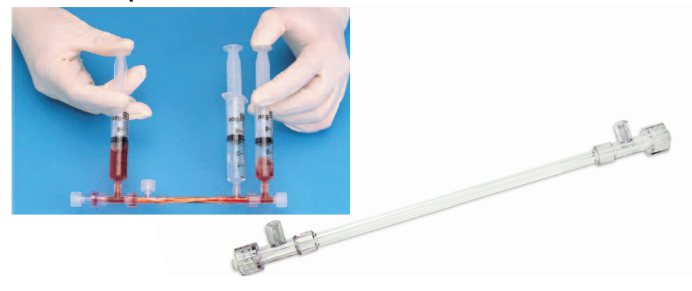
Figure 1. MicroKros® Module and MicroKros® module hand operation using syringes.
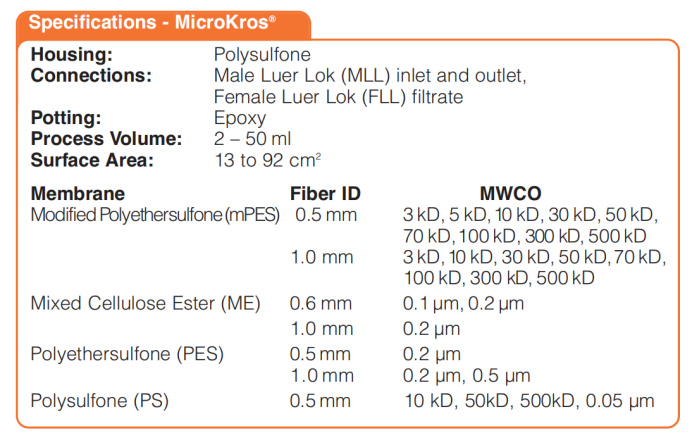

Figure 2. MidiKros® & MidiKros® TC module.
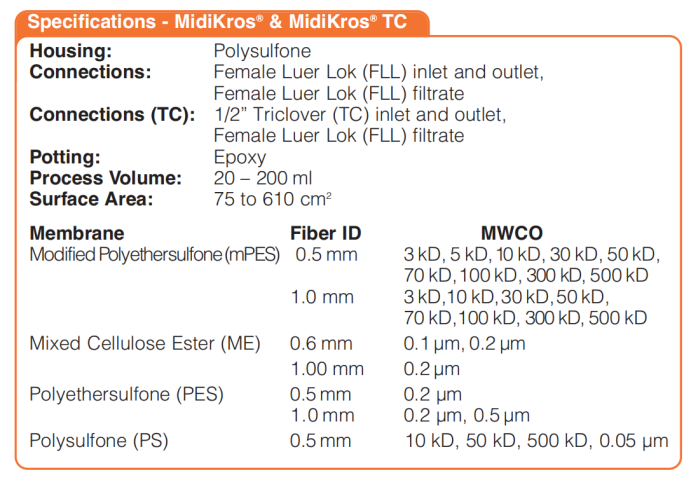
Dry Membrane Preparation
For Mixed Cellulose Ester and Modified Polyethersulfone fibers, flush with 2 mL of water per cm2 of surface area to remove trace levels of glycerin. For Polyethersulfone (PES) flush with 1 mL of waterper cm2 of surface area. For Polysulfone (PS) fibers, flush with 2 mL of 20% alcohol (isopropanol, ethanol or methanol) per cm2 of surface area and follow by flushing with 2 mL of water per cm2 of surface area to remove all alcohol.
Pre-flushed Membrane (wet) Prparation
Flush module with 2 mL per cm2 of surface area with water or preferred buffer to remove hydrogen peroxide.
Storage and Shelf Life
Hollow Fiber modules both wet and dry should be stored at room temperature. If they are stored in a dry (50% R.H.) and cool (<95°F / 35°C) environment they will have a shelf life of three years.
Instructions for Use
Setup Using Syringes
To operate the MicroKros® module using syringes, connect an arm of each female luer tee to both male luer retentate ports of the module. Connect to the two remaining luer tee arms, a male luer cap and a male luer check valve. Connect a second male luer cap to the female end of the check valve. Connect luer syringes to the two open stems of the luer tees. One syringe contains the product to be processed, the second is empty. A third luer syringe and a male luer cap are connected to the two filtrate ports (Fig. 3).

Figure 3. MicroKros® module hand operation mode.
Crossflow Filtration
Tangential flow or crossflow filtration is initiated by applying pressure to the retentive syringe containing the process fluid, while allowing the other syringes to move freely. Fluid will flow through the lumen of the fibers from the full syringe downstream to the empty retentate syringe. Now apply pressure to the receiving syringe to change the direction of flow back to the originating syringe. This process is continued by applying pressure first to one syringe then to the other, repeatedly. Cell or particle-free filtrate is forced into the filtrate syringe. Note that it is important to apply pressure to only one retentate syringe at a time. Applying pressure to both syringes will induce backpressure and reduce the efficiency of crossflow filtration. Typical filtration rate varies from 1 ml/min - 5 ml/min depending on the membrane type.
Diafiltration
For washing cells or particles to remove unbound free protein, diafiltration can be performed as follows: Introduce 1 ml of the product to be washed (the volume will show as 0.5 ml on the syringes, as 0.5 ml is the hold-up volume of the module with the syringes attached. Add 4.5 ml of particle free buffer via the check valve. This step dilutes all components by 5.5 fold. Concentrate the cells or particles back to 1 mL (0.5 ml on the syringe) by the concentration techniques above. This step restores the original concentration of cells or particles while not concentrating surfactants, proteins or other solutes that freely permeate the membrane. By this procedure unwanted solutes are reduced in concentration by a factor of 5.5. Additional purification can be achieved by repeating the process. Final purification will be 5.5 * n, where n is the number of times that the process is repeated.
Pump Operation
The MicroKros® can also be operated using a peristaltic pump. The MidiKros® modules can only be operated with a pump. This technique requires that either MicroKros® or MidiKros® modules be installed with tubing connecting the module inlet to the retentate outlet. The tubing must have a tee connecting the feed/buffer reservoir to the pump suction, and a capped connection for removing air in the pump discharge. Fluid is pumped in a closed loop across the membrane surface.As filtrate is generated, more fluid is automatically drawn into the loop. Overall processing volume is equal to the holdup volume ofthe tubing plus the module retentate volume. It is possible to achieve retentate volumes as low as 2 ml by using short tubing.
Ordering Information
MicroKros®
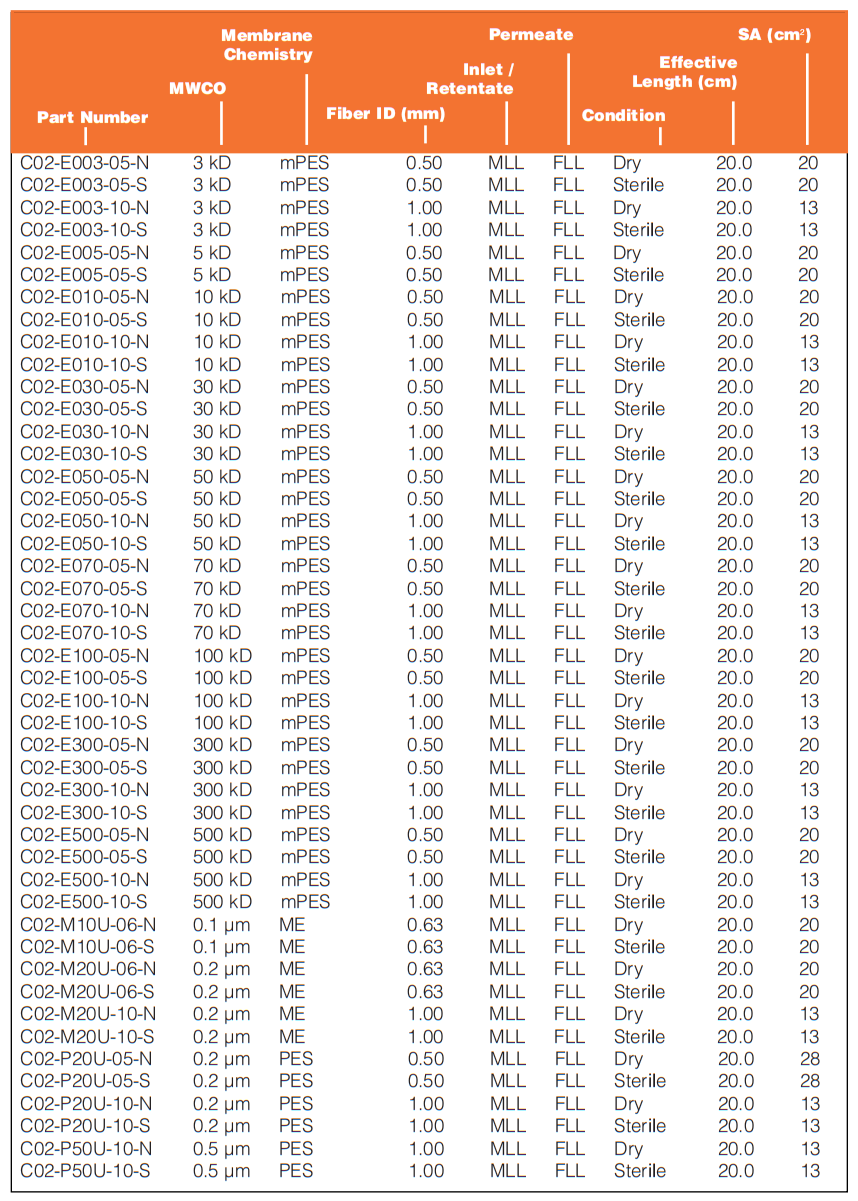
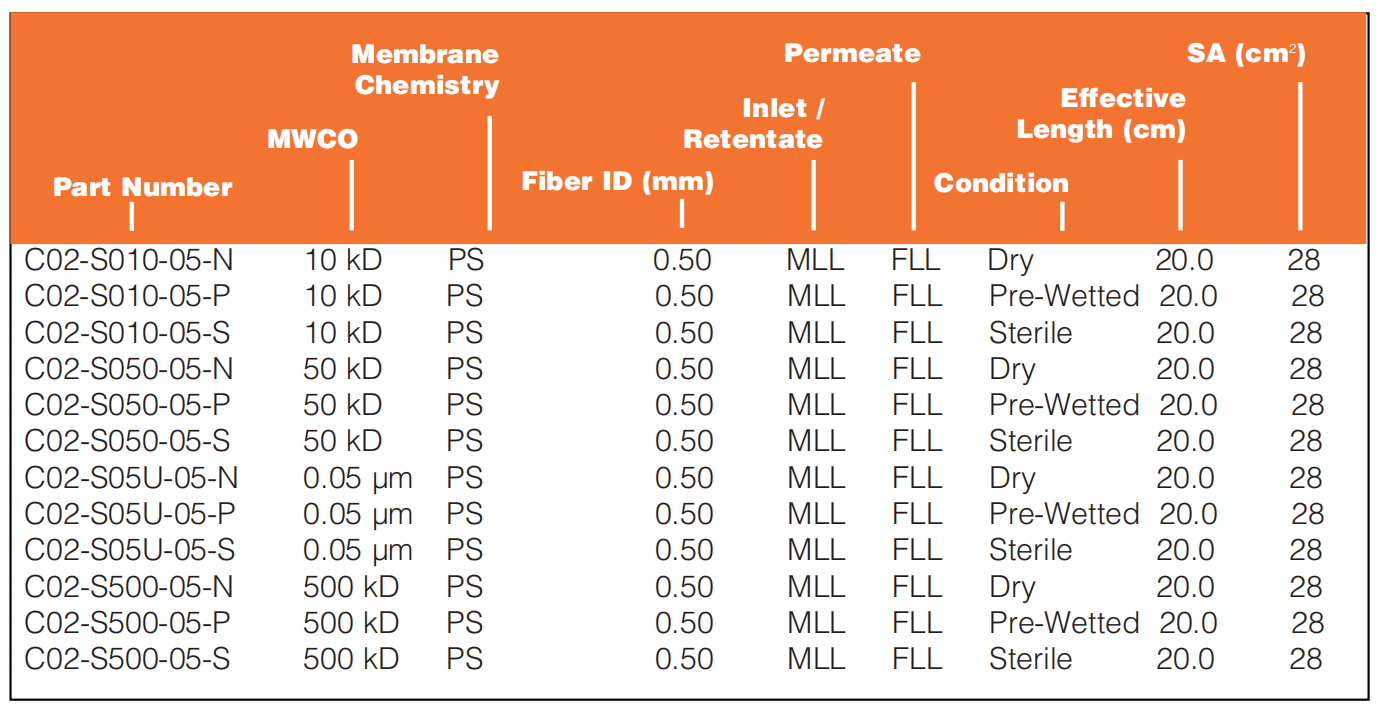
MidiKros®
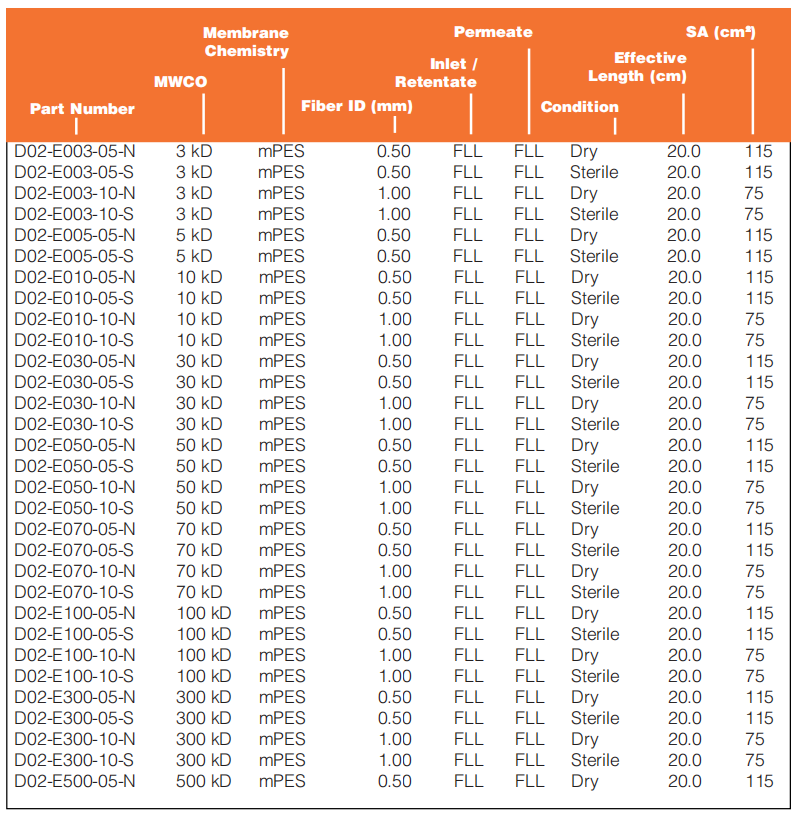
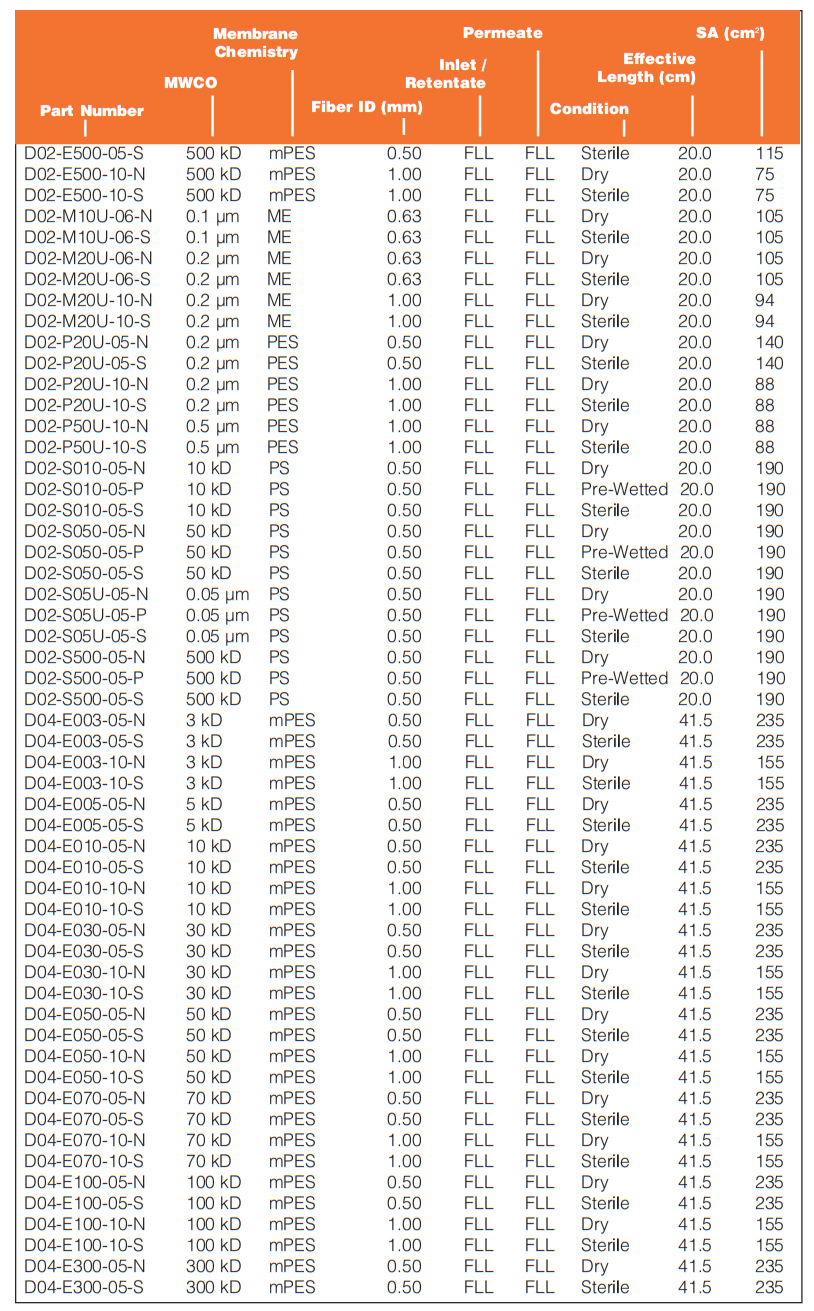
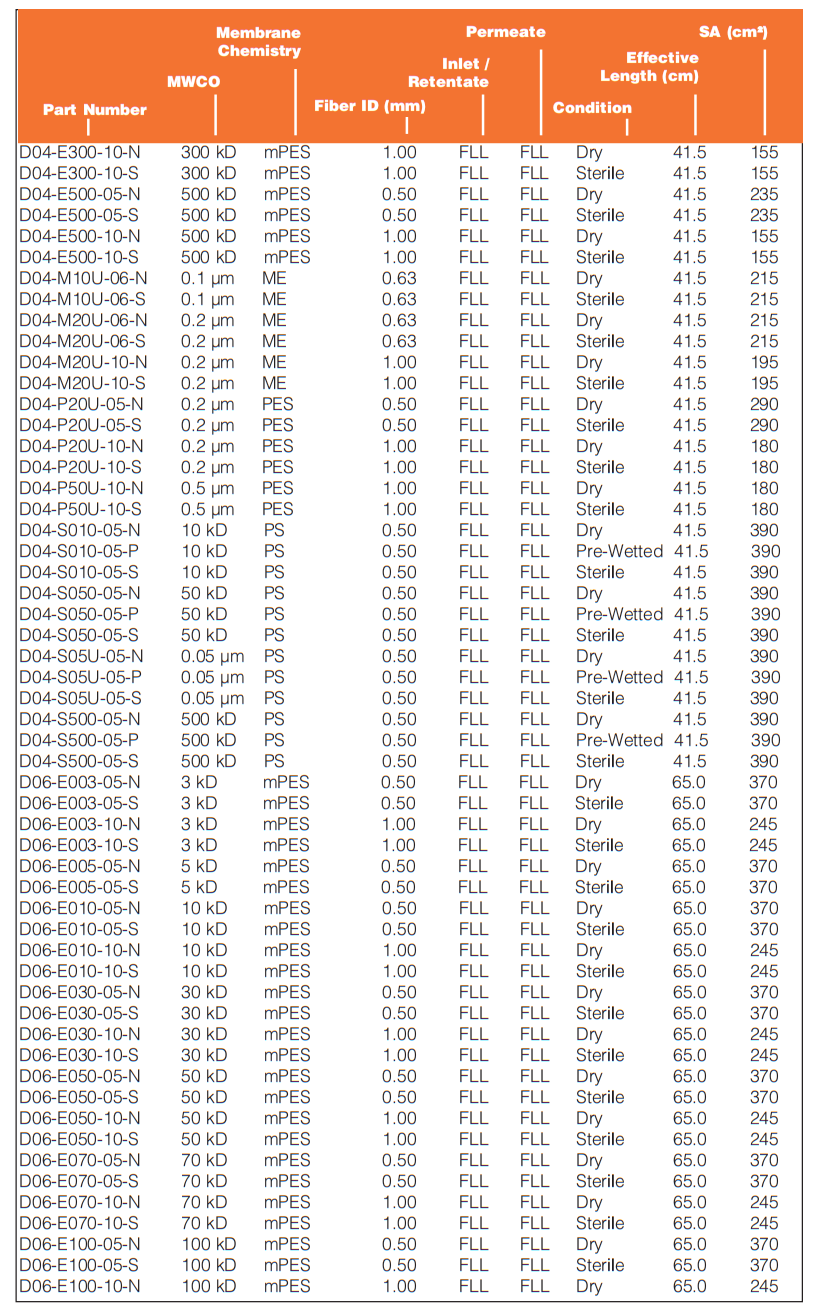
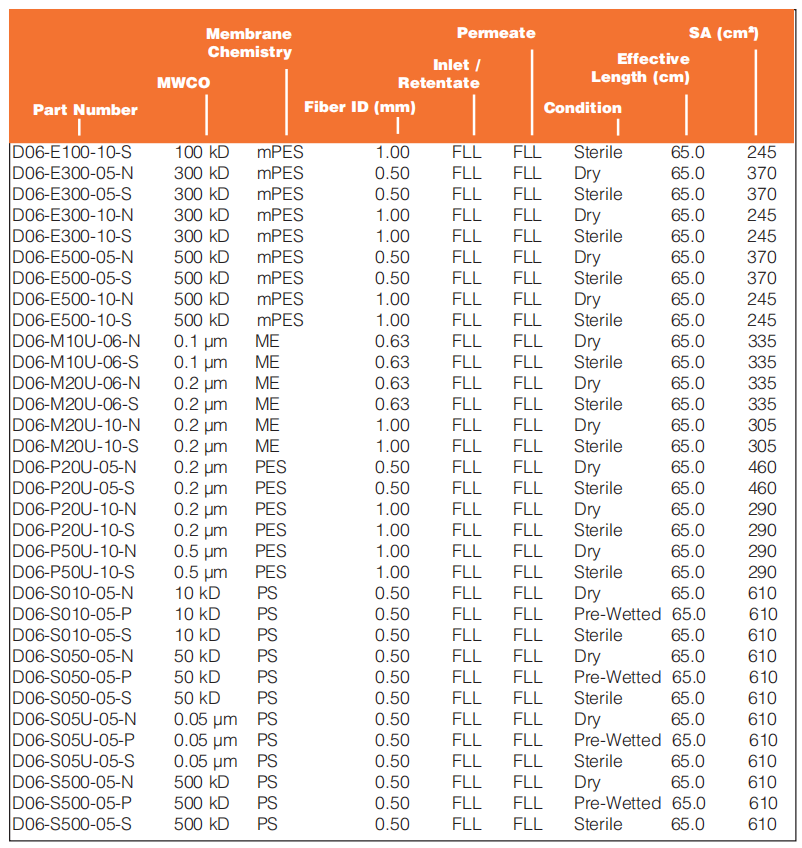
MidiKros® TC
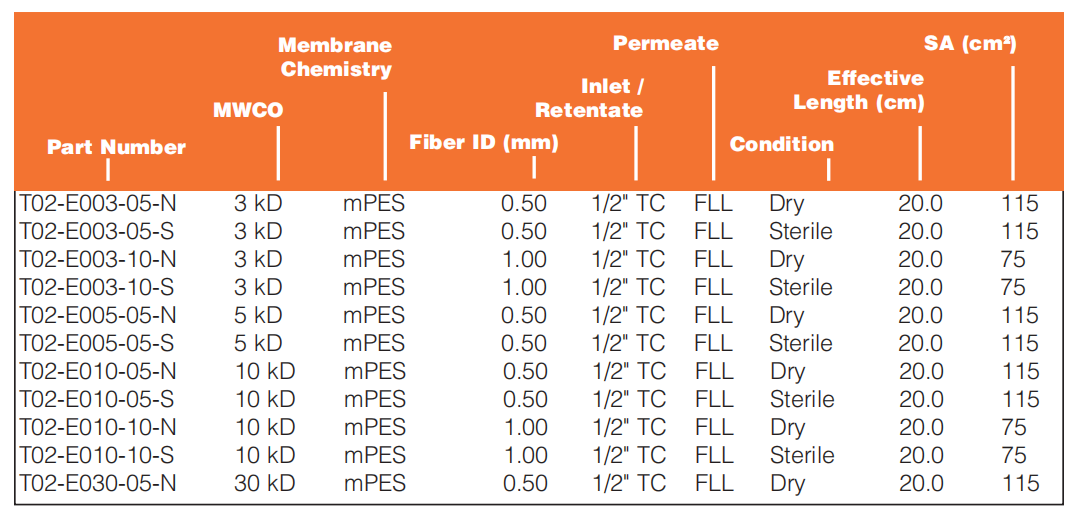
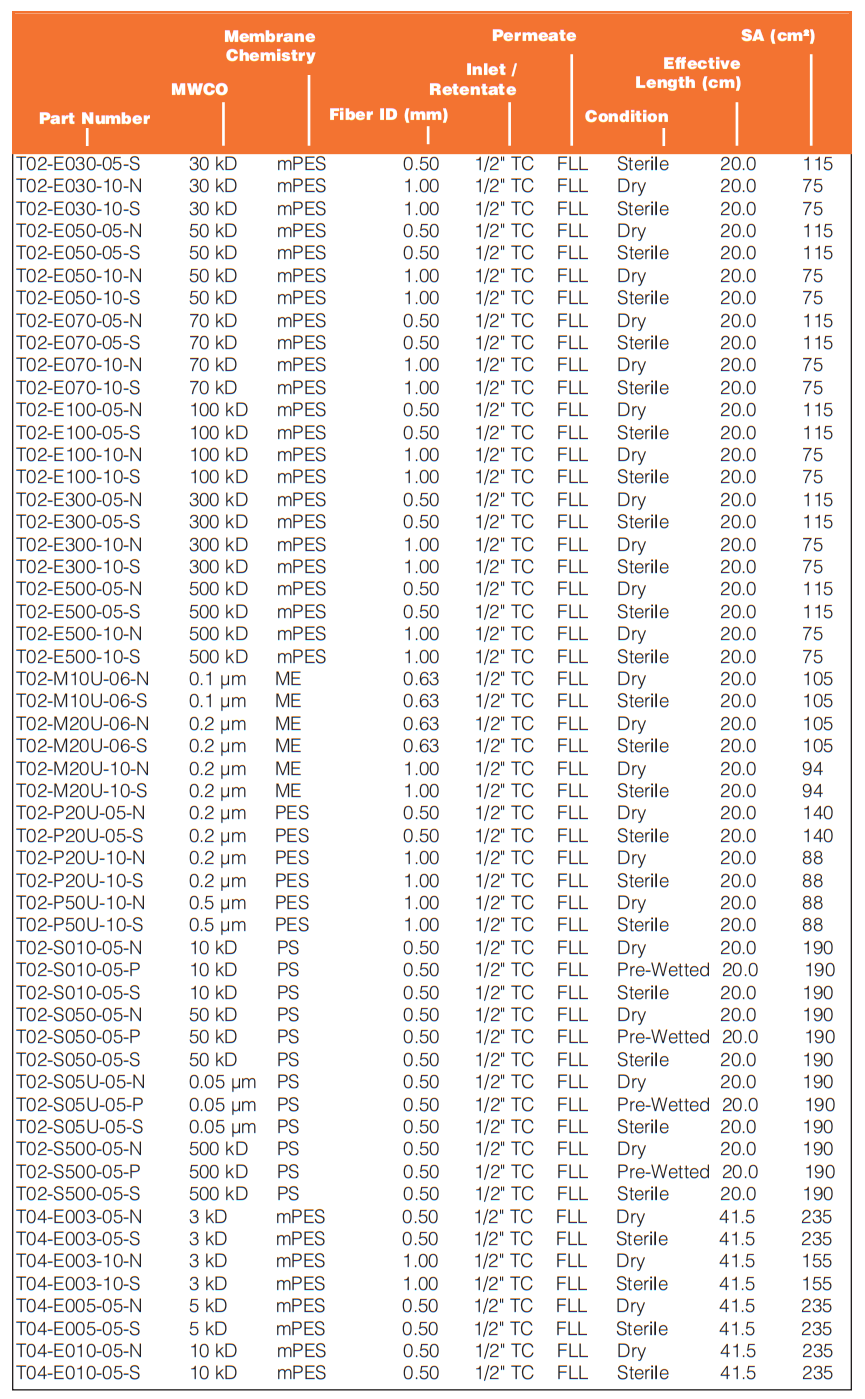
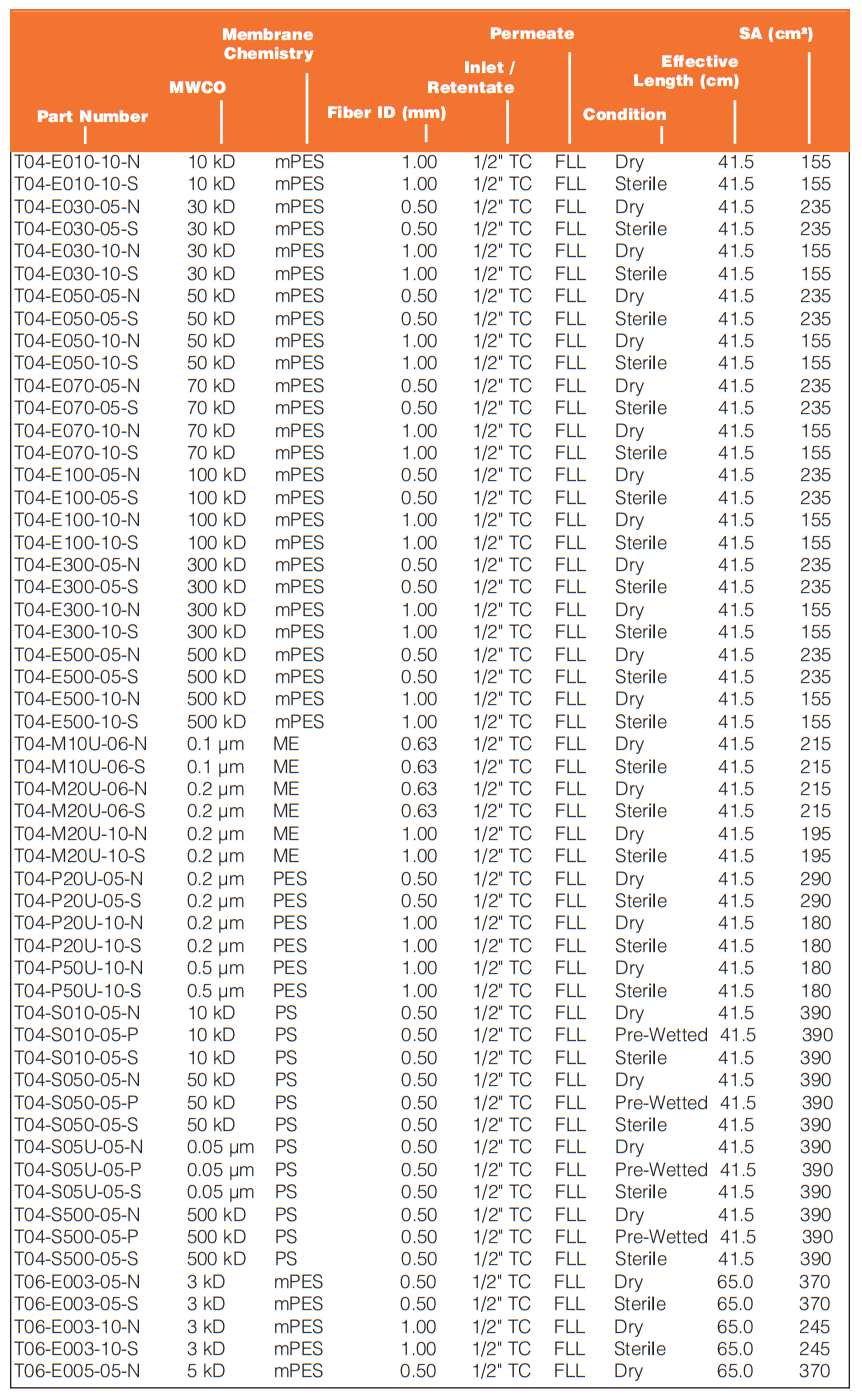
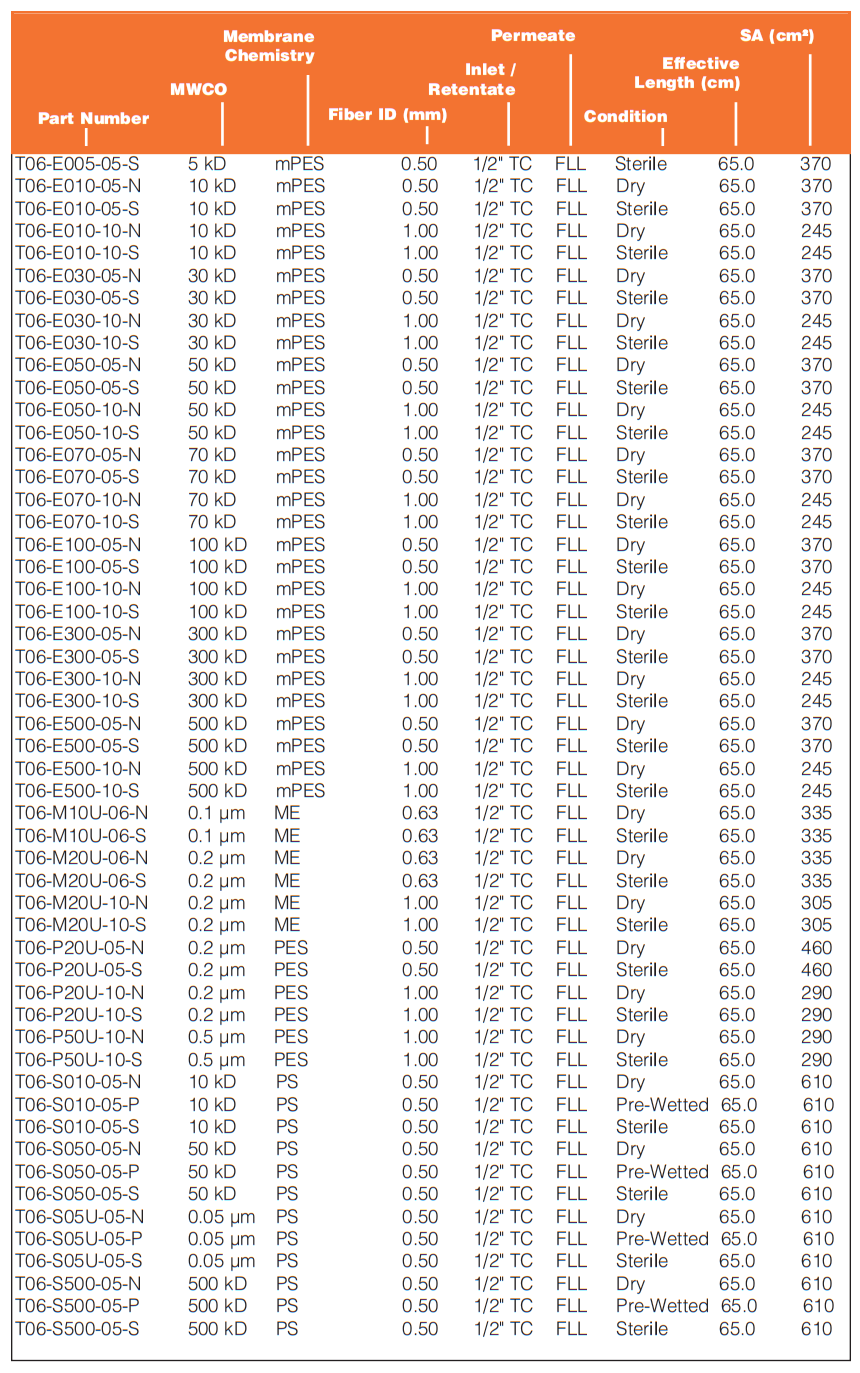
Membrane Compatibility Table
This chemical resistance chart is intended for use as a guide, not as a guarantee of chemical compatibility. Variables in temperature, concentrations, durations of exposure and other factors may affect the use of the product. It is recommended to test under your own conditions.
The R following codes are used to rate chemical resistance:
R Recommended
L Limited Exposure
NR Not Recommended
U Unknown
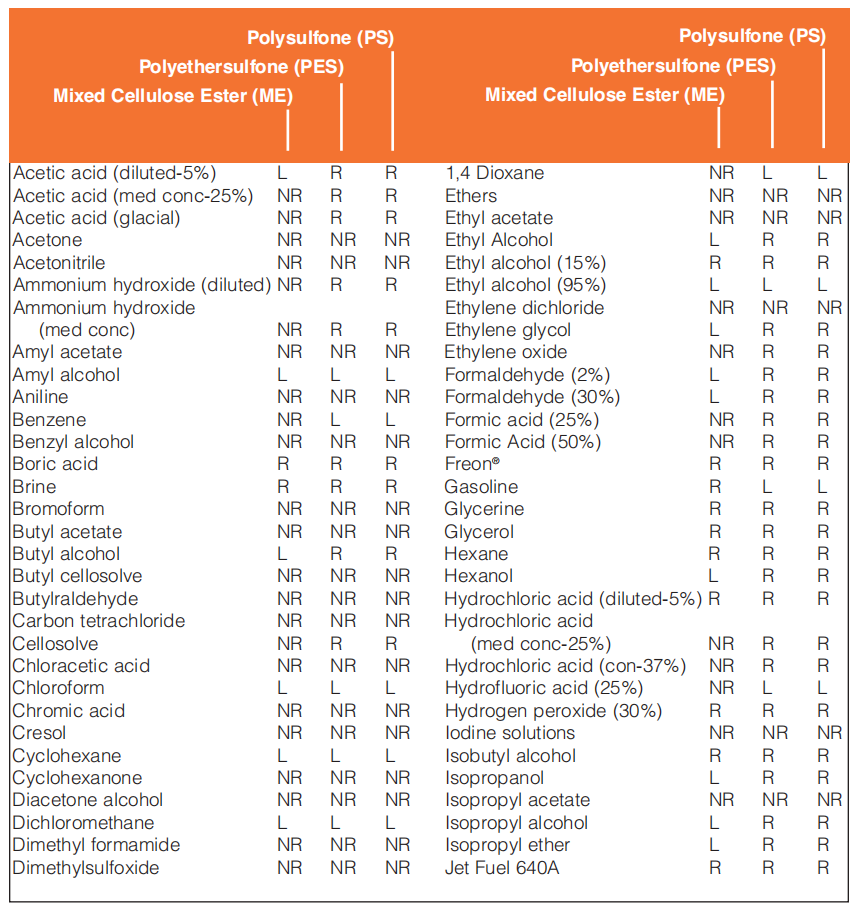

联系我们
- 上一篇: 5-diagnostics —— 凝血领域专家(14)
- 下一篇:【ARRAYJET&SCHOTT MINIFAB】Schott Nexterion™ 3-D Hydrogel (H) coated slides技术资料

